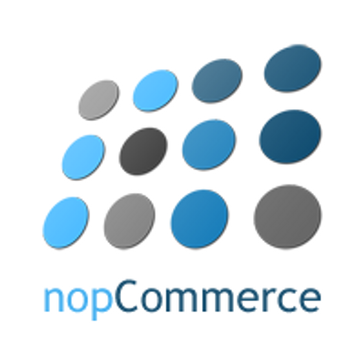Business Automation
Business Automation Table of Contents
- Business Automation
- What Is A Business Automation
- Why Automate A Business Processes
- How Does Business Automation Improve Business Processes
- What Does Business Automation Look Like
- Business process automation Examples
- Employee Onboarding
- Why Should You Automate Business Processes
- What Business Process Should You Automate
- Benefits Of Using Business Automation Tools
- Overview of Business Automation
- Best Ecommerce Solution by Rating
- Best Ecommerce Solution by Price
- Best Ecommerce Solution by Rated Features
- Check Your Ecommerce Solution Offers Round The Clock Support
- Make Sure Your Ecommerce Solution Offers The Features You Need
- Best Ecommerce Software Solution Verdict
- Ecommerce Software Frequently Asked Questions
- What is the best Ecommerce Solution?
- What is the cheapest Ecommerce Solution?
- Is there a free Ecommerce Solution?
- View all of the top Ecommerce Software Solutions
- Ecommerce Alternatives
- Ecommerce VS Side by Side Comparisons

Business Automation
What Is A Business Automation
Business process automation, sometimes called digital or business automation, enables the technological automation of many complex, business-oriented processes. It can streamline an organisation for increased productivity, bring down operational costs, improve service quality, add value to strategic processes or contain operating costs to a maximum extent. By streamlining various processes, the business can concentrate on the core activities it should ideally perform and give more time to the core business aspects. However, in the past, the term process automation was associated with a loss of control over company activities, making it undesirable for most organisations. Today, this general concept has been restructured to be more clear and precise regarding what business means when it uses the term.
Business automation refers to the automated management of business operations by controlling processes through a combination of technology and manual labour. Although it sounds easy in principle, the notion of having a single system that performs all tasks and submits reports can be very complex in practice. Automation only reduces the tasks that need manual intervention but does not eliminate them. For instance, tasks like data entry and payroll can be performed manually but having an automated system that performs these tasks will make the process much faster. Also, automation does not eliminate the need for certain tasks, such as data entry or reduces the importance of human interaction at all stages of the operation.
The biggest advantage of automation is that it allows small businesses to reap the full benefits of technological developments without learning programming or system administration languages. Automation also relieves small businesses from repetitive human tasks. These tasks include billing, purchasing, customer support, inventory control, order processing, research and development, and accounting. Small businesses use automation because they do not need as many employees or as many human operators to handle these processes. After all, the software handles all these functions. The primary disadvantage of automation is that it sometimes causes processes to become too complicated, slowing down business operations. Furthermore, businesses may find that their systems become vulnerable to hackers who can disrupt or damage the information stored in systems.
Why Automate A Business Processes
Many people make the mistake to think that this automation means the end of manual work in an organisation, but the truth is the opposite. Automation in any organisation does not mean you exclude all human interaction, and that is why some people still get upset about automation being introduced into their organisations. If your business requires manual work to be done, you must find ways to automate this work. Not doing so can leave you with a lot of money spent on redundant work that you could have saved had automation not been introduced.
A business process is simply a group of tasks aimed at achieving an organisational objective. An individual is then assigned responsibility for every task in the business process. Over the years, business processes have been adapted to meet diverse organisational requirements, from simple tasks needed to handle basic functionality to highly complex ones that require specialised knowledge and experience. Nowadays, businesses require automated business processes as they have become aware of the benefits that automation brings with increased customer satisfaction, improved productivity, reduced employee turnover and improved quality of service.
Automation saves both time and money as it allows tasks to be completed faster and in the right order. For example, instead of spending valuable time searching for files in folders, the system can find them for you and alert you when they have been found. It can also perform repetitive tasks such as copying a letter to an email or uploading and printing a document in just a few seconds. It enables the employees to spend more time focusing on the tasks they are performing rather than searching for a particular document when it has been stored. However, before automation can be fully implemented, you need to carefully choose a company capable of implementing your chosen automated processes without increasing your workload and without resulting in a decrease in quality of service.
How Does Business Automation Improve Business Processes
Business automation is a theory that aims to improve the operations and productivity of a company by removing non-productive activities and automating repetitive business processes. It is mostly used in organisations that are large and have several departments and employees. Business process improvement (BPI) helps business owners reduce costs and improve the efficiency of business processes while increasing company profit and employee satisfaction. However, business owners should be cautious about the implementation of BPI to avoid business failure and financial penalties.
Business process improvement attempts to remove unproductive or unneeded human intervention in business activities, which mainly include the following activities: accounting, communication, decision-making, human resource management, hiring, payroll, marketing, advertising, public relations, and research and development. Some companies have replaced these activities with automated processes, and as a result, have experienced increased profits and productivity. However, it is important to note that an organisation's overall performance and productivity can only be improved if all business processes are properly implemented. Business owners should also understand that they cannot achieve full automation on their own. Therefore, it is advisable to hire the services of a qualified and experienced business automation consultant to help you streamline your business processes.
However, before you start implementing business processes, it is important for you to carefully look through all of your business processes and identify those that can automate. You may need the help of a business consultant in this process, especially if you do not have the knowledge, time, or manpower to automate all business processes. Once you have identified the functions that can automate, you can initiate the implementation by creating software that will perform the job for you. Although this technology can dramatically decrease the amount of labour you need to spend on your business tasks, business owners should remember that it is not worth the money you will spend on implementing business automation.
What Does Business Automation Look Like
The terms business and computer automation are not the same. Computer automation involves having the software performing a task. It could automatically post a new web page, add a new post to a blog, or update some information on the website. On the other hand, business automation involves an entire business process that automates various tasks, much like computer automation.
One popular form of business automation is business process management software (BPM). BPM works because many processes within a business will be separated into different modules, each with its purpose and responsibility. For example, customer orders will likely go into a business department, such as ordering supplies, handling payments, or shipping out products. These departments can be built, tested, and monitored using software to coordinate all different processes.
Another popular form of business automation is the use of outsourcing to a third party company. It is similar to BPM in that departments within the business will be involved, but in this case, the outsourced company will take care of the outsourcing tasks. A good outsourcing company will design the website, write the website content, create marketing materials for the business, design the advertisements, and do many other tasks. In this case, the employees in the outsourced company would act as digital assistants, passing their tasks off to one person who is in charge of passing them off to another person who is performing the tasks. These are just a couple of ways how a business can automate itself and save money while doing so.
Business process automation Examples
Business process automation is a modern business management system that assists businesses in realising their goals and maximising productivity. By automating business processes, companies can save on costs, increase profit margins, and improve customer relations. Business process automation aims to create effective and efficient methods in organisations by applying applicable technology, integrating systems and information, workflow management, and real-time monitoring. By automating business processes, businesses become more productive and have increased flexibility, increased operational efficiency, increased customer satisfaction, and reduced cost. Business process automation software is designed to help business managers and IT professionals to implement these activities through applications such as automation software, business process automation, customer relationship management, enterprise data management, web presence, and ERP (enterprise resource planning).
Some of the typical business process automation examples include customer relationship management, enabling companies to better manage and respond to customers. Business process automation also refers to applications used to automate business processes, such as logistics or supply chain management or telecommunications. Another popular example is sales process automation, commonly known as BPA, which focuses on collecting, analysing, and integrating sales information for better customer service. The third most common example of a BPA application is warehouse management, which aims to improve efficiency by controlling, diagnosing, and stabilising the operations of the warehouse. Although many industries, especially those in the information technology and communications sector, are employing business process automation in their daily operations, other companies have yet to adopt this management system.
There are two main types of software applications for business process management, namely information technology infrastructures and software applications for desktop computer users. ITI is a suite of software products developed for small, medium, and large-scale industrial applications. Desktop PC software is an application created to run on the computers installed in businesses. Although both are designed to perform similar functions, ITI focuses more on functionality while PC software is more concerned with standard computer operations. Most ITI based software products are also designed to be compatible with Windows programs, while most PC software is made specifically for Linux and Mac OS. However, most ITI-based software products are available at a low cost and are much easier to customise than most traditional software products, especially for businesses with tight budget constraints.
Employee Onboarding
Employee onboarding is the procedure of integrating an already employed individual with the organisation and its culture and providing the resources and information necessary to become a practical part of the group. This integration fosters positive employee relations that are conducive to high levels of productivity and efficiency. If your company is looking to implement this program to promote greater employee engagement, here are some steps to help you get started.
Draw up an employee handbook for all current employees that outlines expectations for the job offer as well as what will be expected of them when they accept the job offer. This handbook should outline expectations regarding salary, benefits, co-workers, dress code and hours worked, holiday policy, work ethics and theft policy. You can also use employee development videos to illustrate these topics further. Train all current employees on the new policy and procedures that go along with it. You should also provide formal refresher training for those who have been with the organisation for more than a year or two.
With everything in place, you should be able to foster an environment of support for your new hires. You can do so by encouraging a unified 'we are one' culture. This culture refers to a unified team, each with its leadership and organisational culture. You must have a robust support system in place before you run such an employee onboarding program so that those individuals don't have to search for help within their department on how to accomplish goals or meet milestones.
Why Should You Automate Business Processes
If you are like many people today, then you may be interested in learning how you can automate business processes so that you can free up more time for other things within your business. Most successful businesses today use at least some form of automation, whether through software applications or simply having their staff perform tasks manually in various sections within the business. After all, who wants to be spending all day sitting at a computer trying to remember to key something in when you can automate it so that it happens as you work.
One reason you should automate business processes is the cost savings associated with doing so. Business process automation can often mean the difference between being profitable or not, depending on how you run your business. Business process automation applies technology to perform repetitive tasks or activities in a company where an automated system can replace manual labour. It's done, quite simply, to maximise profits, reduce expenses, streamline routines, and even reduce staffing.
When selecting the right business processes automation solution for your needs, you need to understand that there are two types available: traditional and fully automated systems. Traditional systems, such as those available from Kissflow, are relatively simple to implement and don't require the level of complexity typically associated with this technology. However, fully automated solutions, such as those provided by Kissflow, take full advantage of the power of IT and software automation to do the work for you while eliminating any possibility of error or human error. By employing one or the other type of solution, you can save both time and money while dramatically increasing productivity throughout your company.
What Business Process Should You Automate
If you haven't heard of BPA, it's time you learn the term. What business processes should you automate? It is a question that many business owners and managers have asked since the dawn of new business technology. Many believe that businesses should only utilise technology that is necessary for their operations. Some even believe that they should never automate anything at all. However, by reviewing some of the new trends in business technology, we can see how this myth could not be further from the truth.
BPA uses computer technology to automatically perform many different actions, thereby enhancing productivity and helping achieve specific business objectives. Typically, tasks are categorised into five categories: customer service, office administration, finance, marketing, and real estate. Business processes are broken down into more minor activities such as customer interactions, inventory, order processing, human resource management, and tracking information. Many tasks involved in every business activity can be automated. Some of these activities include: completing employee tasks, handling payroll, and maintaining information systems. Many processes can be automated, even if you are not using complex software programs to manage your business.
One task that is often overlooked in businesses is marketing. Most people assume that marketing tasks should be outsourced or assigned to employees. However, many tasks associated with marketing can be automated, including creating effective ads, tracking results, and analysing customer data. The point of automation in business is to improve processes and eliminate non-value-added tasks to maximise the return on investment of resources and make your business more successful. By automating the tasks associated with business goals, you will be able to spend more time working on the tasks that are truly important to your success.
Benefits Of Using Business Automation Tools
There are several benefits that business process automation tools can bring to your business. First, the devices can help you save a lot of money and provide you with more time to do other essential things for your business. You will also get better results due to these tools since they will eliminate or reduce some of the mundane tasks in your industry. If you are working hard to increase the profits of your company, then you should take a good look into the benefits that this technology can offer you. You may even find out that it is worth all of the time and effort you have put into it so far.
One of the first benefits of using business process automation tools is that it can help you reduce the costs of doing business. It means that you can spend more of your money on other things aside from the salaries of your workers. The tools that are used can also help you keep track of your inventory more efficiently. Since you will no longer be spending time manually entering information into your computer and tracking what products are already in stock, you will have the time to focus on improving your warehouse's efficiency and the products you have in stock. By doing this, you can be sure that you are getting the best deals out of your business transactions.
Another benefit of using business process automation tools is making the company's entire operation much more streamlined. You will create invoices, work schedules, and projects much faster than before since the processes you are using can be automated. It will allow you to prioritise other more important things in your company while the company goes on without any interruptions. It is one of the major reasons why many people use these tools because it makes their job so much easier.
Scroll down to read our indepth Ecommerce Platforms guide. What you should know, Ecommerce Platforms features, price plans and support. Pros and Cons of Ecommerce Platforms as a ecommerce, everything is explained below.
Overview of Business Automation
Shopify is a software company that specialises in ecommerce software for small to enterprise level businesses.
Shopify is listed as the best ecommerce software related to Ecommerce Platforms. Shopify was founded in 2006 in Ottawa, Canada and currently has over 6,124 employees registered on Linkedin.
Best ECOMMERCE Solution By Rating
Get our stories delivered
From us to your inbox weekly.
 Shopify
Shopify
 Shopify Plus
Shopify Plus
 Volusion
Volusion
 WooCommerce
WooCommerce
 3dcart
3dcart
 Big Cartel
Big Cartel
 Ecwid
Ecwid
 Contalog
Contalog
 Kooomo
Kooomo
 Ecomchain
Ecomchain
 Trusted Shops
Trusted Shops
 PayMotion
PayMotion
 PayKickstart
PayKickstart
 Upclick
Upclick
 Storbie
Storbie
 Nexternal eCommerce Platform
Nexternal eCommerce Platform
 nopCommerce
nopCommerce
 Virto Commerce
Virto Commerce
 Gumroad
Gumroad
 FastSpring
FastSpring